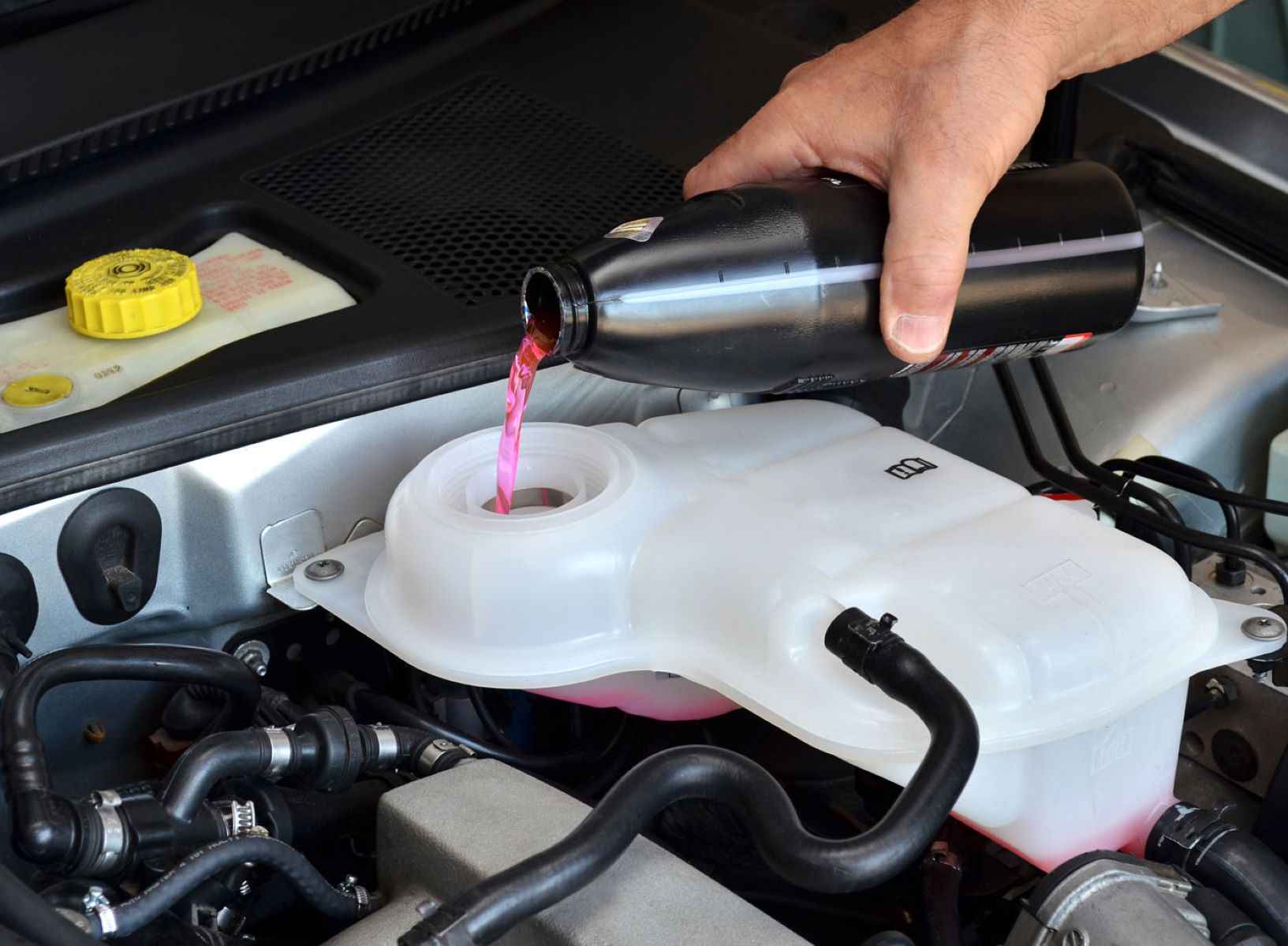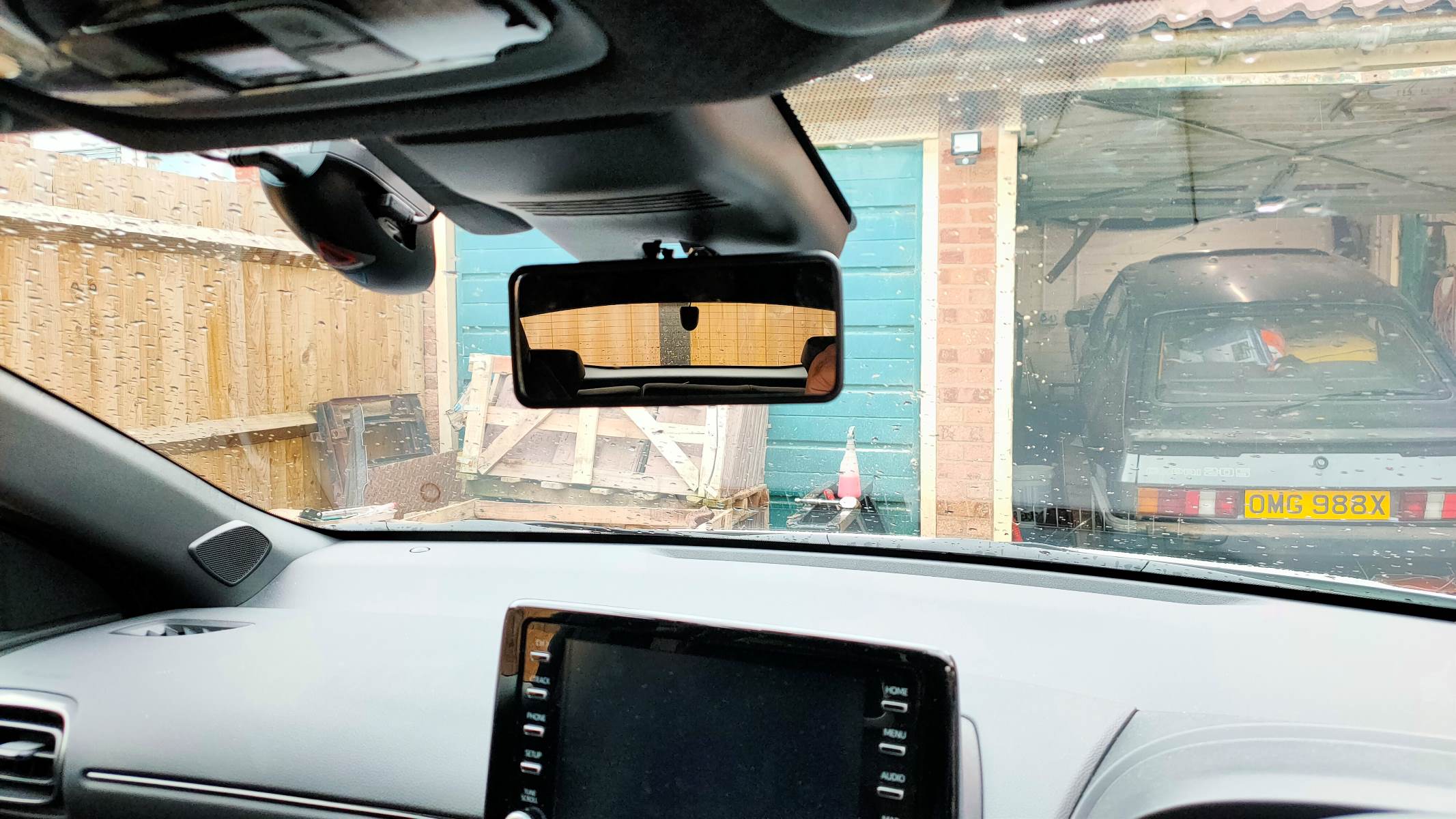Home>Automotive>The Shocking Cost Of A Coolant Leak Revealed!


Automotive
The Shocking Cost Of A Coolant Leak Revealed!
Published: January 20, 2024
Discover the true cost of a coolant leak in the automotive industry. Uncover the shocking impact of this issue and how to address it effectively.
(Many of the links in this article redirect to a specific reviewed product. Your purchase of these products through affiliate links helps to generate commission for Regretless.com, at no extra cost. Learn more)
Table of Contents
Introduction
Your vehicle is a complex and finely tuned machine, designed to transport you safely and efficiently from one destination to another. Among the many components that work together to keep your vehicle running smoothly, the cooling system plays a crucial role in maintaining the optimal operating temperature of the engine. However, when a coolant leak occurs, it can lead to a cascade of detrimental effects, both for your vehicle's performance and your wallet.
In this comprehensive guide, we will delve into the world of coolant leaks, shedding light on the signs, impacts, and financial costs associated with this common automotive issue. By understanding the implications of a coolant leak and learning how to prevent it, you can safeguard your vehicle's health and your financial well-being.
So, buckle up and get ready to uncover the shocking truth about the cost of a coolant leak and how it can impact your driving experience.
Understanding Coolant Leaks
Coolant, also known as antifreeze, is a vital fluid that circulates through your vehicle's engine to regulate its temperature. It plays a pivotal role in preventing overheating and maintaining the optimal operating conditions for the engine to function efficiently. Coolant leaks can occur due to various reasons, such as deteriorating hoses, a damaged radiator, a faulty water pump, or a worn-out gasket.
When a coolant leak occurs, it disrupts the delicate balance of the cooling system, leading to potential engine overheating and subsequent damage. Identifying the source of the leak is crucial, as it can emanate from different areas of the vehicle, such as the radiator, hoses, water pump, or even the engine itself.
One of the common causes of coolant leaks is the aging of rubber hoses, which can become brittle and prone to cracking over time. Additionally, corrosion or damage to the radiator can result in leaks, compromising the system's ability to contain and circulate the coolant effectively. A malfunctioning water pump, responsible for circulating the coolant throughout the engine, can also be a culprit in causing leaks.
Understanding the dynamics of coolant leaks involves recognizing the distinct characteristics of coolant, which is typically brightly colored and has a sweet smell. Identifying these traits can aid in detecting leaks and distinguishing them from other fluid leaks in the vehicle.
In essence, comprehending coolant leaks entails recognizing the critical role of coolant in regulating the engine's temperature, understanding the potential sources of leaks, and being able to identify the distinct qualities of coolant to effectively diagnose and address any leaks that may arise. By gaining a deeper understanding of coolant leaks, you can take proactive measures to prevent them and safeguard your vehicle's performance and longevity.
Signs of a Coolant Leak
Detecting a coolant leak early on is crucial for preventing potential damage to your vehicle and avoiding costly repairs. Fortunately, there are several telltale signs that can indicate the presence of a coolant leak. By being attentive to these indicators, you can promptly address any issues and mitigate the risk of more severe consequences.
-
Visible Puddles Under the Vehicle: One of the most apparent signs of a coolant leak is the presence of brightly colored puddles beneath your parked vehicle. Coolant is typically a vibrant green, orange, or pink color, making it easily distinguishable from other automotive fluids. If you notice such puddles forming under your car, it is a strong indication of a coolant leak that requires immediate attention.
-
Steam or Sweet Odor: A noticeable sweet smell, reminiscent of maple syrup, may permeate the air around your vehicle when a coolant leak is present. Additionally, if you observe steam rising from the engine compartment or notice a sweet aroma while driving, it could signify a coolant leak. These sensory cues can serve as early warnings, prompting you to investigate the possibility of a leak in the cooling system.
-
Frequent Overheating: When a vehicle experiences recurrent episodes of overheating, it may be indicative of a coolant leak compromising the engine's cooling capabilities. Keep an eye on the temperature gauge and be attentive to any fluctuations or consistent overheating, as these could signal a potential coolant leak.
-
Low Coolant Levels: Regularly check your vehicle's coolant reservoir to ensure it maintains the proper level. A sudden decrease in coolant levels without any visible signs of external leaks could point to an internal leak, such as a damaged head gasket. Monitoring the coolant levels can help you identify potential leaks before they escalate into more severe issues.
-
White Exhaust Smoke: If you observe white smoke emanating from the exhaust, it may indicate that coolant is being burned along with fuel, signaling a potential internal coolant leak. This phenomenon can result from a compromised head gasket, leading to the mixing of coolant and engine combustion gases.
By remaining vigilant and attuned to these signs, you can proactively address coolant leaks, safeguarding your vehicle from potential damage and ensuring its continued optimal performance. Early detection of coolant leaks can save you from costly repairs and prevent more extensive engine complications, underscoring the importance of promptly addressing any indications of a coolant leak.
The Impact of Coolant Leaks on Your Vehicle
Coolant leaks can have far-reaching and detrimental effects on your vehicle, extending beyond the immediate loss of fluid. Understanding the profound impact of coolant leaks is essential for grasping the urgency of addressing this issue promptly.
Engine Overheating
One of the primary consequences of a coolant leak is the potential for engine overheating. Coolant plays a pivotal role in dissipating the heat generated by the engine, ensuring that it operates within the optimal temperature range. When a coolant leak occurs, the fluid level decreases, impeding the system's ability to regulate the engine's temperature. As a result, the engine becomes more susceptible to overheating, which can lead to severe damage, including warped cylinder heads, compromised gaskets, and even engine failure.
Engine Performance and Efficiency
In addition to the risk of overheating, coolant leaks can significantly impact the overall performance and efficiency of the engine. The reduced coolant level diminishes the system's capacity to maintain the engine at its ideal operating temperature, potentially leading to decreased fuel efficiency and compromised performance. As the engine struggles to contend with inadequate cooling, it may experience diminished power output and increased fuel consumption, ultimately affecting the vehicle's overall drivability.
Potential Engine Damage
Persistent coolant leaks can result in long-term damage to critical engine components. The lack of proper coolant circulation can lead to accelerated wear and tear on essential parts, such as the water pump, radiator, and hoses. Furthermore, the exposure of the engine to excessive heat due to coolant loss can cause internal components to warp, leading to costly repairs or even necessitating the replacement of the entire engine.
Environmental Impact
Beyond the implications for the vehicle itself, coolant leaks pose environmental concerns. Coolant contains ethylene glycol, a toxic substance harmful to the environment and wildlife. When leaked onto roadways or into the ground, coolant can contaminate soil and water sources, posing a threat to ecosystems. Recognizing the environmental impact underscores the urgency of promptly addressing coolant leaks to prevent ecological harm.
Safety Risks
Coolant leaks can also present safety hazards for drivers and passengers. Reduced coolant levels can result in unexpected overheating while driving, leading to sudden engine failure and potential accidents. Moreover, the sweet-smelling aroma of coolant can attract animals, posing a risk of ingestion and poisoning. Addressing coolant leaks is not only crucial for preserving the vehicle's functionality but also for ensuring the safety of everyone on the road.
In essence, the impact of coolant leaks on your vehicle extends beyond mere inconvenience, encompassing the realms of performance, safety, environmental responsibility, and long-term maintenance costs. By recognizing the multifaceted repercussions of coolant leaks, you can appreciate the urgency of promptly addressing this issue and safeguarding your vehicle's well-being.
The Financial Costs of Coolant Leaks
Addressing coolant leaks is not only imperative for preserving the operational integrity of your vehicle but also for mitigating the substantial financial burdens that can arise from neglecting this issue. The financial costs associated with coolant leaks encompass a spectrum of expenses, ranging from immediate repairs to potential long-term repercussions.
Immediate Repairs and Fluid Replacement
Upon detecting a coolant leak, immediate repairs are essential to rectify the underlying issue and prevent further damage. Depending on the source and severity of the leak, the necessary repairs may involve replacing damaged hoses, repairing the radiator, or addressing a malfunctioning water pump. Additionally, the cost of replenishing the lost coolant further adds to the immediate financial implications of a coolant leak. The expenses associated with these repairs and fluid replacement can quickly accumulate, especially if the leak has led to extensive damage within the cooling system.
Engine Complications and Repair Costs
If a coolant leak persists without prompt intervention, it can result in severe engine complications, leading to substantial repair costs. Engine overheating due to coolant loss can cause damage to critical components, such as the cylinder heads, gaskets, and pistons. Rectifying these issues often entails extensive repairs or, in more severe cases, the need for engine replacement. The financial ramifications of addressing engine-related complications stemming from coolant leaks can be exorbitant, underscoring the urgency of promptly addressing any indications of a coolant leak.
Environmental Cleanup and Remediation
Beyond the immediate repair and maintenance costs, coolant leaks can necessitate environmental cleanup and remediation efforts. If coolant has leaked onto roadways or into the ground, it may require professional intervention to mitigate environmental contamination. The expenses associated with environmental cleanup, including soil remediation and water source protection, can further contribute to the financial toll of coolant leaks.
Long-Term Maintenance and Prevention
Proactively addressing coolant leaks and implementing preventive measures can help mitigate long-term maintenance costs. Regular inspections, timely repairs, and the replacement of aging cooling system components can prevent the escalation of coolant leaks and the associated expenses. By investing in preventative maintenance, such as coolant system flushes and component replacements, you can reduce the likelihood of future coolant leaks and the subsequent financial burdens they entail.
In essence, the financial costs of coolant leaks encompass immediate repair and fluid replacement expenses, potential engine complications and repair costs, environmental cleanup and remediation, and long-term maintenance and prevention measures. By recognizing the comprehensive financial implications of coolant leaks, you can appreciate the significance of promptly addressing this issue to mitigate financial burdens and preserve the longevity of your vehicle.
Preventing Coolant Leaks
Preventing coolant leaks is paramount in ensuring the longevity and optimal performance of your vehicle's cooling system. By implementing proactive measures and adhering to a consistent maintenance regimen, you can significantly reduce the likelihood of coolant leaks and mitigate the associated risks and expenses.
Regular Inspections and Maintenance
Scheduled inspections of the cooling system, including hoses, the radiator, water pump, and connections, are instrumental in detecting early signs of wear, corrosion, or damage that could lead to coolant leaks. Conduct visual inspections for any visible cracks, bulges, or deterioration in the hoses, and ensure that the radiator and its connections are free from corrosion or leaks. Additionally, monitoring the condition of the water pump and its seals can help preemptively address potential sources of coolant leaks before they escalate.
Coolant System Flush and Replacement
Regular coolant system flushes and the replacement of old coolant are essential for maintaining the efficacy of the cooling system and preventing the accumulation of debris or contaminants that could compromise its integrity. Over time, coolant can degrade and lose its protective properties, increasing the susceptibility of the system to corrosion and leaks. By adhering to manufacturer-recommended intervals for coolant replacement and system flushes, you can ensure that the coolant remains in optimal condition, reducing the risk of leaks and preserving the cooling system's functionality.
Temperature and Pressure Management
Monitoring the temperature and pressure levels within the cooling system is crucial for preventing coolant leaks. Ensure that the cooling system operates within the recommended temperature range, as excessive heat can accelerate wear on components and lead to leaks. Additionally, maintaining the appropriate pressure levels within the cooling system safeguards against the formation of air pockets or leaks. Regularly check the radiator cap and pressure relief valve to verify that they are functioning correctly and maintaining the requisite pressure levels.
Addressing Wear and Aging Components
As the vehicle ages, the components of the cooling system, such as hoses, gaskets, and seals, are susceptible to deterioration. Proactively replacing aging components, particularly hoses and gaskets, can preemptively mitigate the risk of coolant leaks. Opt for high-quality, durable replacement parts to ensure the longevity and reliability of the cooling system, reducing the likelihood of leaks due to worn-out components.
Environmental Considerations
Properly disposing of old coolant and adhering to environmentally responsible practices are integral to preventing ecological harm and contamination. Ensure that old coolant is disposed of in accordance with local regulations and environmental guidelines, preventing the inadvertent release of harmful substances into the environment.
By integrating these preventive measures into your vehicle maintenance routine, you can effectively minimize the risk of coolant leaks and uphold the operational integrity of your vehicle's cooling system. Proactive maintenance and attentive care are pivotal in preventing coolant leaks and preserving the long-term functionality and efficiency of your vehicle.
Conclusion
In conclusion, the impact of a coolant leak extends far beyond the immediate inconvenience, encompassing potential engine damage, financial costs, safety risks, and environmental implications. Understanding the signs of a coolant leak, as well as its detrimental effects on the vehicle's performance and longevity, underscores the urgency of promptly addressing this issue.
By recognizing the financial implications of coolant leaks, including immediate repair and fluid replacement expenses, potential engine complications, and long-term maintenance costs, it becomes evident that prevention and early intervention are key to mitigating these financial burdens. Proactive measures, such as regular inspections, coolant system maintenance, and addressing aging components, can significantly reduce the likelihood of coolant leaks and their associated costs.
Furthermore, the multifaceted impact of coolant leaks on the vehicle's performance, environmental responsibility, and safety emphasizes the need for vigilance and responsible maintenance practices. Early detection and preventive measures can safeguard the vehicle from potential engine damage, safety hazards, and ecological harm, underscoring the importance of prioritizing the health of the cooling system.
In essence, by gaining a deeper understanding of coolant leaks, recognizing their signs, and appreciating their implications, drivers can take proactive steps to prevent leaks, mitigate risks, and ensure the long-term functionality and efficiency of their vehicles. By integrating preventive maintenance into their vehicle care regimen, drivers can safeguard their vehicles from the shocking costs and repercussions of coolant leaks, preserving both their financial well-being and the health of their beloved automobiles.











